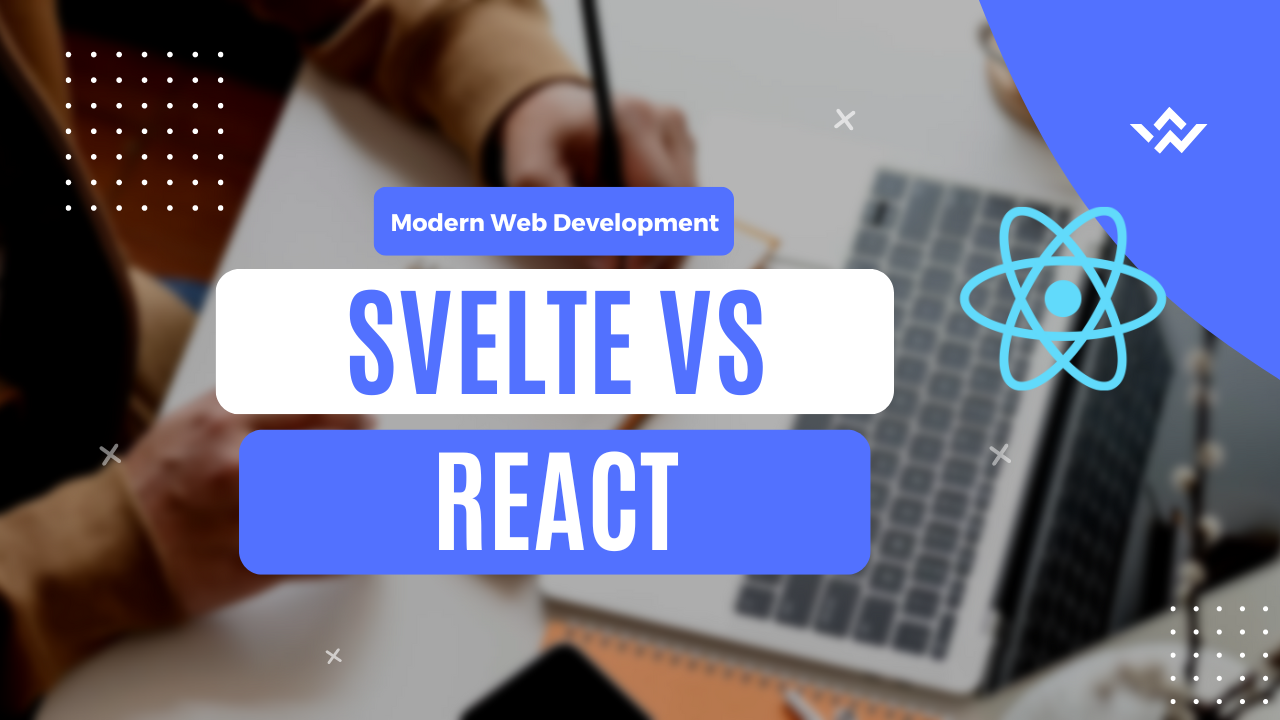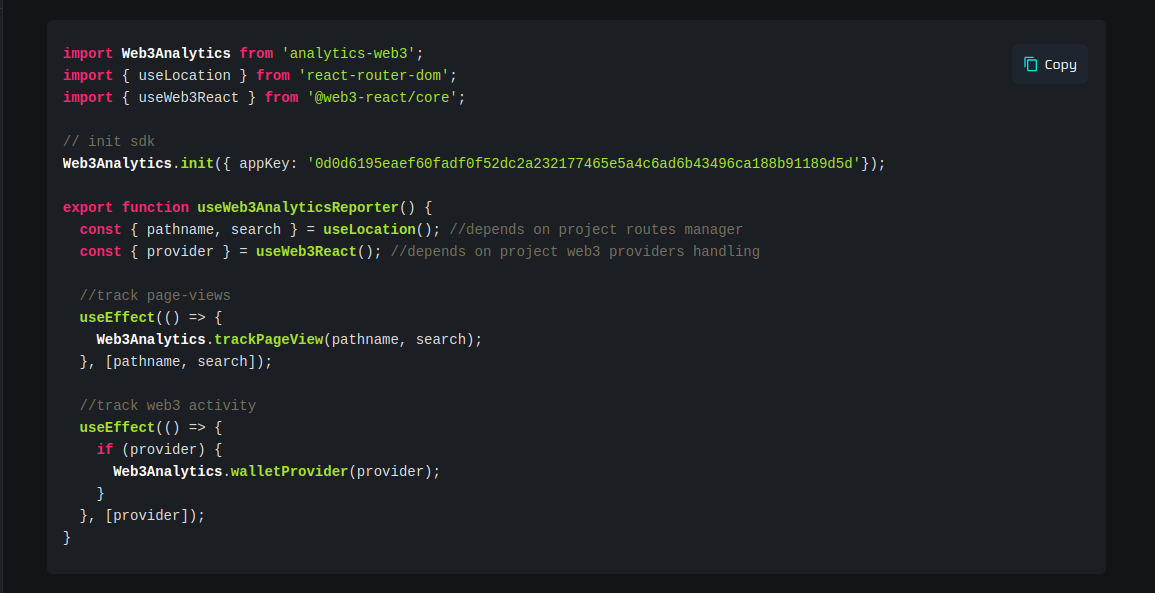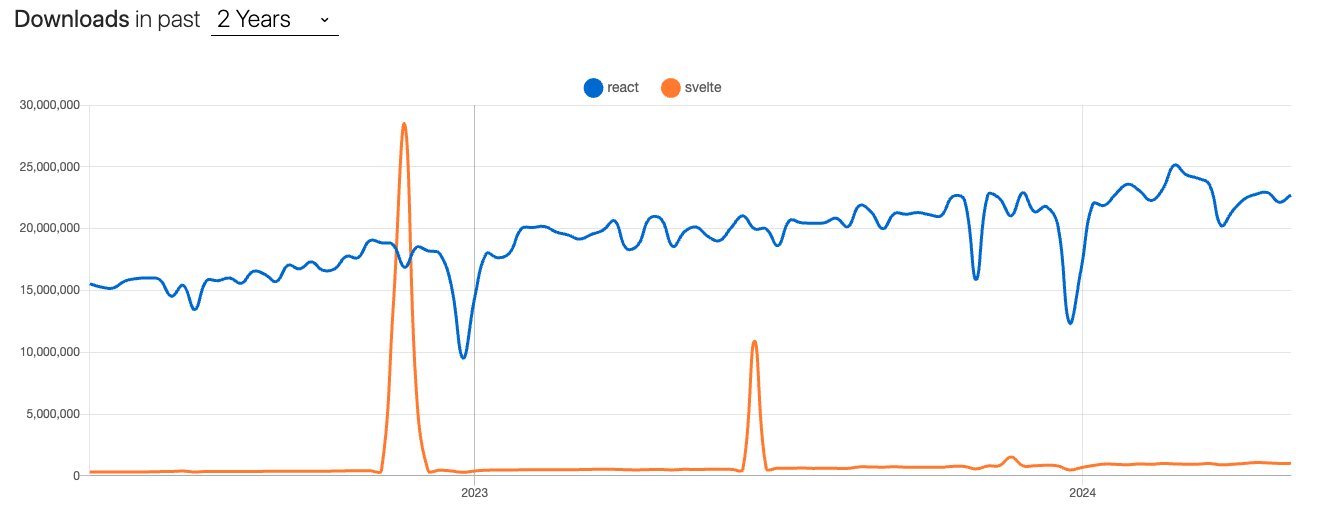Svelte vs React: A Comprehensive Comparison for Modern Web Development

Introduction
Selecting the right JavaScript framework is a critical decision that can steer the direction and success of your web development project. Amidst the myriad of frameworks available, Svelte and React have emerged as two of the most intriguing choices for developers. Both have their unique philosophies, strengths, and communities, leading to a split in preference across the tech sphere.
This article goes beyond the surface-level chatter to deliver a rigorous comparison of Svelte vs React. We'll assess their pros and cons in various aspects like performance, syntax simplicity, ecosystem support, and much more, helping you to assess which framework aligns best with your project's goals.
What is Svelte?
Svelte is a modern JavaScript framework that embarks on a less-traveled path, diverging from the norms set by traditional frameworks. Pioneered by Rich Harris, Svelte’s unique selling point is its compile-time approach. This means instead of relying on heavy, run-time frameworks, Svelte shifts the work to a compile step that runs when you build your app, converting your Svelte components into optimized JavaScript that surgically updates the DOM. Consequently, this leads to significantly faster runtime performance and smaller bundle sizes, as the Svelte compiler removes any unnecessary code.

Svelte makes no use of a virtual DOM—a prominent feature in many other frameworks—and works directly with the browser's DOM, resulting in less memory consumption and better performance.
What is React?
React is a declarative JavaScript library for building user interfaces, primarily maintained by Facebook and a community of individual developers and companies. Since its introduction to the developer world in 2013, React has modelled the way modern web applications are built. React uses a virtual DOM to enable its reactive data flow, which allows developers to write HTML in JavaScript using JSX, seamlessly integrating HTML-like syntax directly within JavaScript code. This facilitates the development of single-page applications where components update dynamically and independently of one another.
React's component lifecycle methods give developers fine-grained control over how and when components render, update, and unmount, making for highly responsive user experiences.

Performance Comparison
Performance considerations are vital when selecting a framework, as they directly impact user experience and resource consumption. Svelte's compile-time approach contributes to performance by minimizing the browser’s workload, leading to quicker render times and interactions. Since Svelte compiles to vanilla JavaScript, the resulting app doesn't carry the weight of excess framework-specific code.

React’s virtual DOM acts as a smart layer between the JavaScript and the actual DOM, where it can batch updates and optimize DOM manipulation. While this has a performance overhead when compared to direct DOM manipulation, the virtual DOM in React is highly efficient for updates in complex user interfaces where judicious handling of state changes and component updates matter most.
Svelte’s simplicity is noticeable from the outset. New developers often appreciate Svelte’s straightforward approach, where the learning curve feels more like an extension of vanilla JavaScript, CSS, and HTML.
Svelte’s code is easy to read and write, with a small API surface area and less reliance on external libraries or tools.
In contrast, React’s ecosystem is more complex, with a vast API and advanced patterns, such as hooks for state and lifecycle management. JSX, while powerful, introduces an additional layer of abstraction that requires some learning.
Understanding the principles behind component state, props, and the React lifecycle is essential for proper usage of the library. Despite this, the component-based nature of React enables a modular architecture that's beneficial once the developer is used to its quwirks.
Ecosystem and Community Support
One of React's most significant advantages is its mature and thriving ecosystem. The sheer volume of tutorials, courses, forums, and third-party libraries ensures that developers have extensive resources. The community is incredibly active, contributing to a wide range of tools and projects that integrate with React.

Svelte is newer by comparison and has a smaller, though dedicated, community offering a rapidly evolving ecosystem, packed with new libraries and tools being developed to simplify the process of creating a web app. Both communities are welcoming and provide significant contributions to the framework's development and support.

Scalability and Maintainability
When it comes to scaling applications, the framework’s structure can play a crucial role in both the short and long term. React's seasoned presence in the tech world has seen it successfully power vast and complex applications. The wealth of patterns and best practices available ensures that React applications can be scaled effectively, maintaining clean code organization and predictability.
Svelte, reduces the overhead typically associated with scaling applications, as it limits the boilerplate and simplifies state management. Svelte's simplicity could lead to higher long-term maintainability, though its effectiveness in very large applications is less proven when compared with React.
When it comes to this area, if you are building out a large project or enterprise application, React is most likely the way forward. It has proven the test of time, has lots of examples on it running at scale and is a great base for anyone looking to build the foundations of a tech stack.
Integration with Other Technologies
Flexibility and the capability to integrate with a variety of technologies can be essential in a project's lifecycle.
React's ecosystem includes tooling for sophisticated state management (Redux, MobX), type checking (TypeScript, PropTypes), and seamless transitions to mobile development (React Native). It demonstrates high compatibility with a vast array of development requirements.

Svelte also offers compatibility with similar technologies, including its own state management solutions and official TypeScript support. However, due to its younger ecosystem, the range of options might be more limited compared to React.
Deployment and Production Considerations
The production phase of application development revolves around building a performant, maintainable, and scalable product. Svelte aims to simplify this process through its compiler, resulting in highly optimized JavaScript that contributes to faster load times and better performance.
React-based applications generally have larger bundle sizes due to the abstraction layers and utility libraries, but techniques like code splitting and lazy loading can greatly mitigate these concerns. For server-side-rendered applications, both frameworks offer solutions (SvelteKit and Next.js for React), each with its own sets of best practices to achieve optimal performance.
Real-World Case Studies
Analyzing real-world applications provides a practical view of the frameworks in action. Companies like The New York Times have adopted Svelte for its lightweight projects, praising the framework for its speed and simplicity.
On the other end, Airbnb and Netflix exemplify React’s capability to handle high traffic and complex interfaces, taking advantage of React’s component-based architecture and vast ecosystem. These case studies demonstrate how both Svelte and React can be leveraged for various project scales and complexities, often influenced by the specific needs and expertise of the development team.
Conclusion
The Svelte vs React debate is not about crowning a winner but recognizing the best fit for your circumstances. Svelte's streamlined developer experience and lightweight apps appeal to those looking for simplicity and performance, whereas React's robust ecosystem and component model offer a powerful solution for complex applications. Reflect on what your project goals are, the scale of your application, your team’s expertise, and choose a framework that will complement those aspects cohesively.
